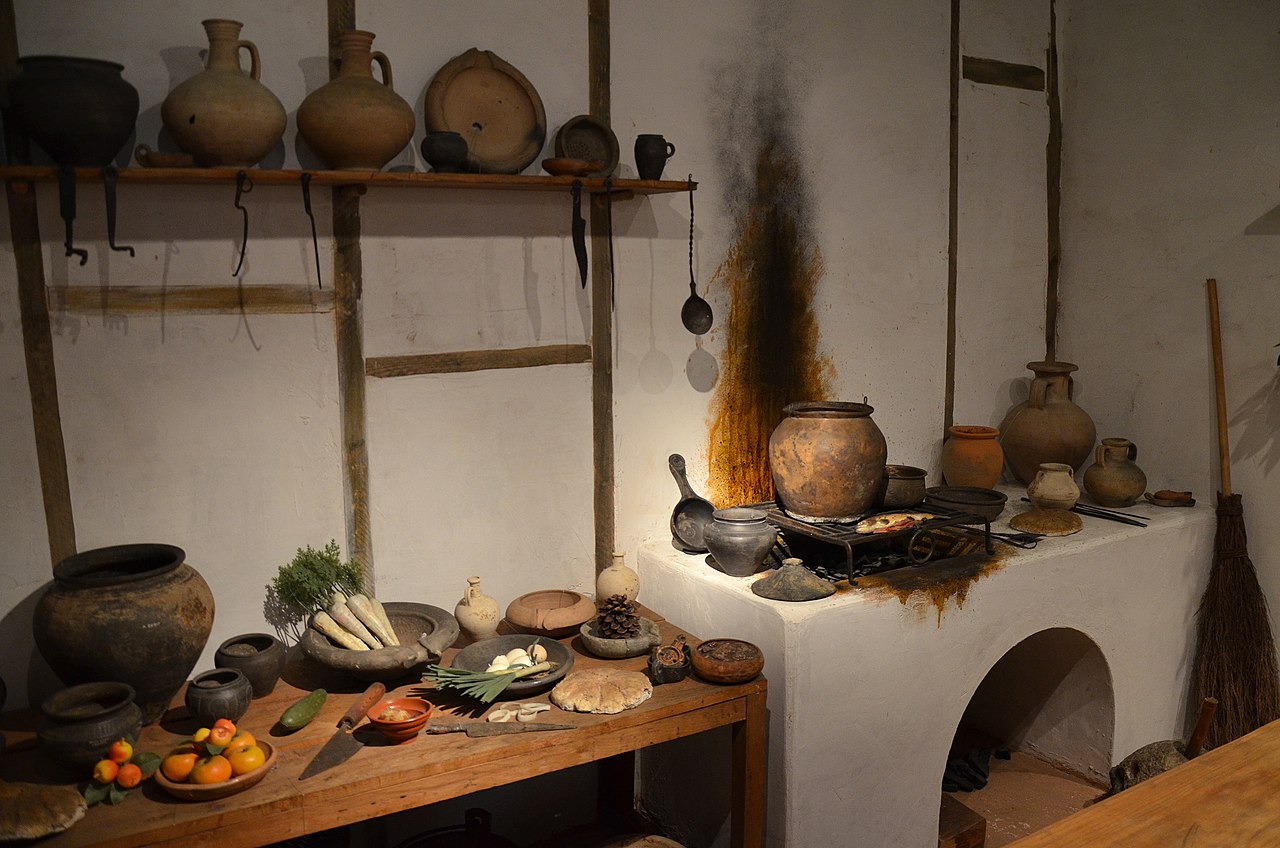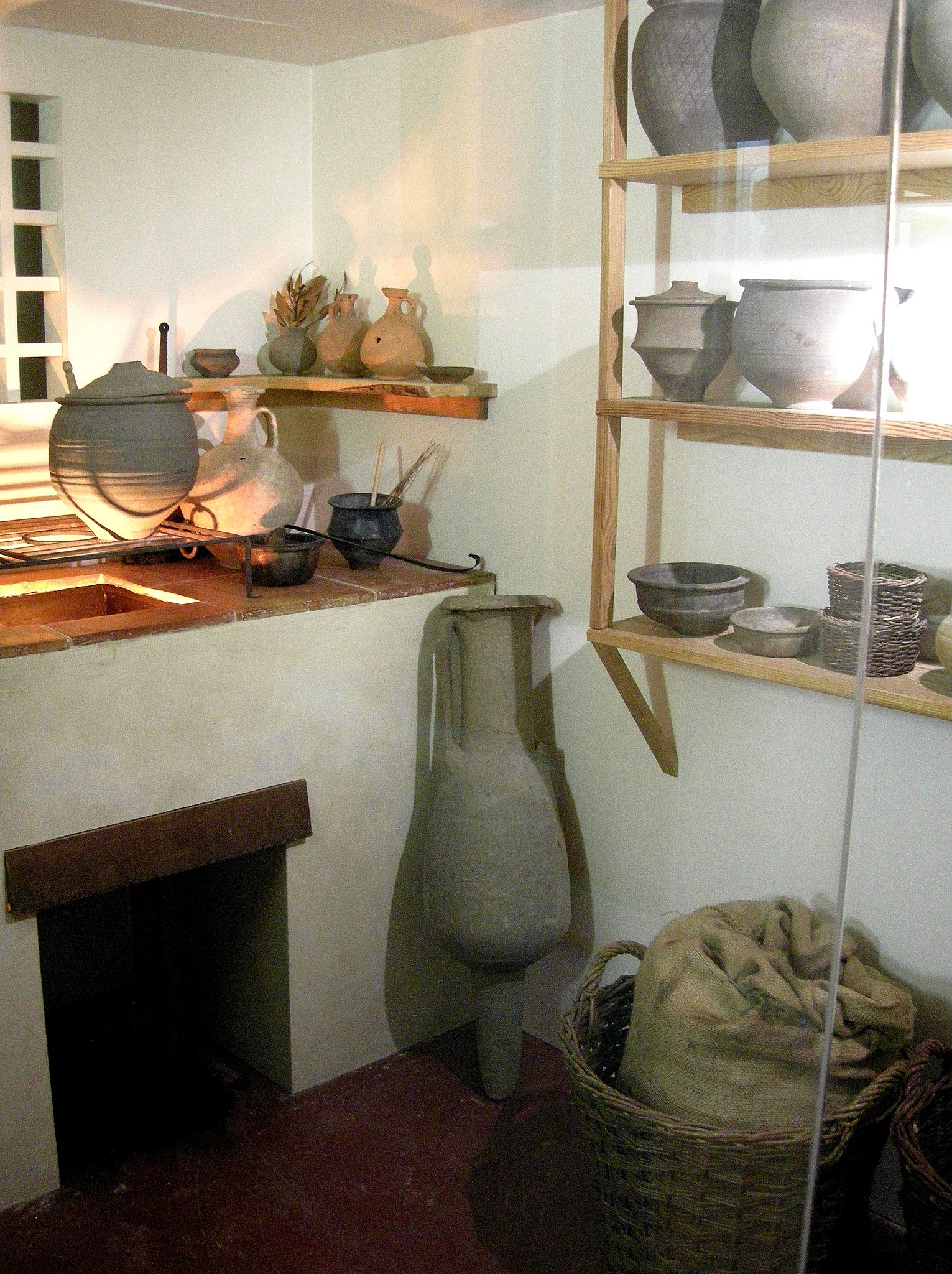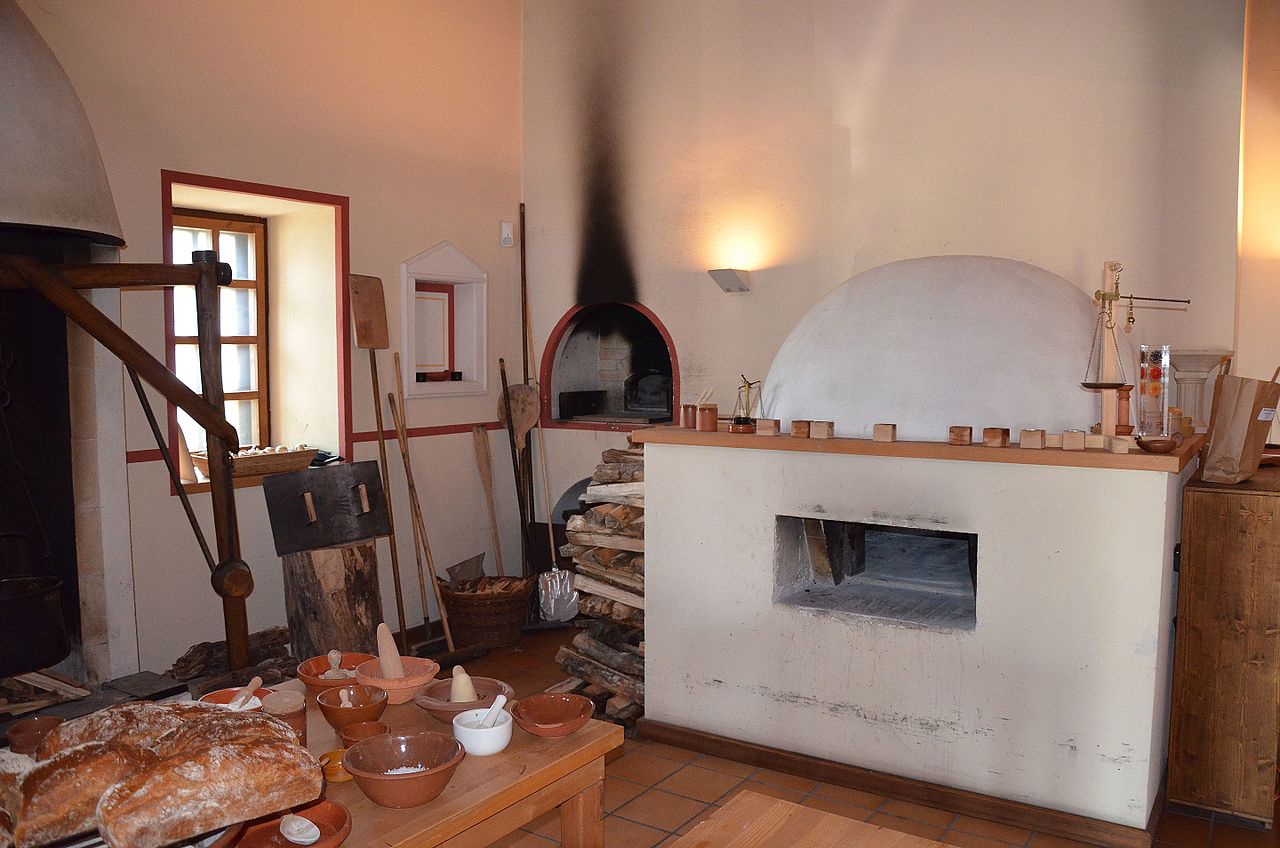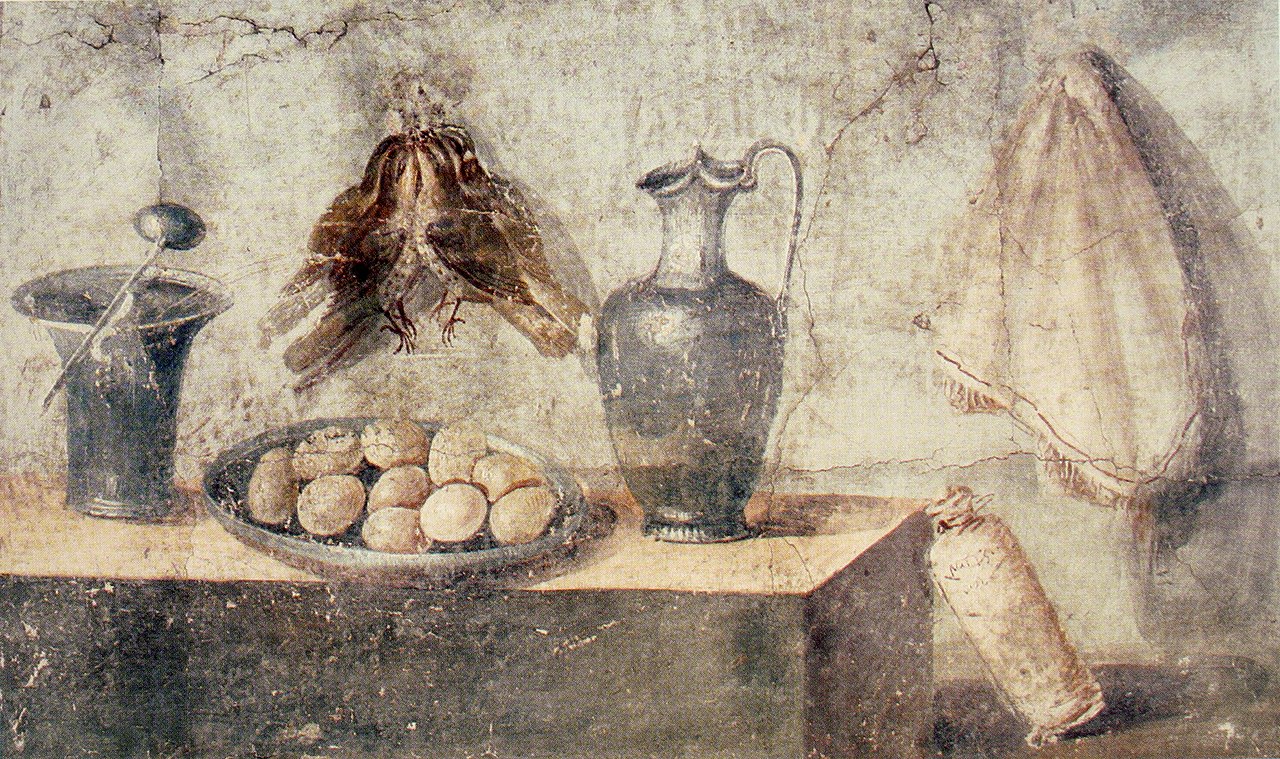
Vertical storage, integrated ovens, focaccia bread made on wooden worktops… the Ancients had surprisingly modern ideas about cuisine. In this post, we answer the question: what did the Romans ever do for our kitchens?
The Ancient Romans loved their food, and the well-heeled Roman household could look forward to three meals a day: a light pre-dawn breakfast, lunch at midday, and a substantial dinner of several courses starting in the late afternoon. So a Roman kitchen (the Culina or Coquina) had to work hard – as did the specially trained slaves (the Coquii) who kept the kitchen going.
Thanks to the work of generations of archaeologists across the Roman Empire we know what a typical Roman kitchen looked like and how it functioned. What is surprising is just how familiar many of those kitchen details, such as vertical storage and integrated ovens, are to us today.
The central point of the kitchen was the hearth (the focus), where the cooking alchemy happened. This would be an open stove fired by charcoal or wood and a beehive-shaped, built-in brick or stone oven. Large pots or cauldrons were suspended from tripods above the stove, metal racks were used for grilling and, then as now, roasting was done inside the oven. Given the heightened fire risk, the hearth would be below or near a window and the kitchen itself located at the back of the main house, close to the garden or courtyard.

Work surfaces were in constant use so had to be durable, resilient and easy to clean; the Romans opted for wood or stone and also used mensae—large wooden chopping boards. While some kitchens were equipped with wooden cupboards, all made use of vertical storage: wooden shelves for crockery, pots and pans and dry ingredients.
Metal utensils, many of which we would recognise, such as ladles, kitchen scissors, skewers and tongs, hung from hooks below the shelves. Dry goods, including beans and spices were stored in large earthenware pots known as dolia. Liquids such as olive oil and wine were kept in terracotta amphorae and propped against kitchen walls… accidents waiting to happen?

There was running water; some Roman kitchens featured built-in stone sinks, with water supplied from a well or nearby water channel. The Romans also knew a thing or two about heat and ventilation: smoke could escape through openings into the kitchen walls or roof or via a chimney and hood.
Rather like grand English country houses, the homes of the wealthiest Romans enjoyed the luxury of special kitchen annexes: a pistrinum, for pastry and breadmaking, a cella vinaria for storing and fermenting wine, and in warmer climates, a cold room, packed with ice gathered during the winter and transported from mountain towns, for perishable food storage.

As for favourite foods, barley, spelt, or wheat bread was a staple for rich and poor alike, eaten with every meal. Wealthy families could tuck into eggs, cheese, poultry, fish, seafood, and vegetables; garum and liquamen, made from fermented fish guts (hmmm) were popular sauces, and used in many dishes. Julius Caesar was said to be particularly partial to pig’s cheek cooked with apples…
Some Roman delicacies, such as flamingo or stuffed roast dormouse, might raise eyebrows today – but we still enjoy focaccia and flatbreads, just as the Romans did, and wholegrains are seen as an essential element of a healthy 21st-century diet. And how about cheesecake? Yes, the Romans enjoyed that too… You can find the cheesecake recipe here and if you fancy a touch of classical dining the Roman way, check out The Classical Cookbook by Andrew Dalby and Sally Grainger.

Ancient Roman kitchen inspiration…
Solid wood worktops
Durable, practical and simply beautiful – at Naked Kitchens we specialise in solid wood worktops so it’s good to see just how much heritage is there…
Bespoke vertical storage solutions
Beautiful wooden shelving, spice racks, useful hooks…the Romans worked out the value of building up and using the walls for convenient storage to keep everything in its place in the kitchen. We’re still perfecting bespoke storage solutions a few thousand years later.
Integrated appliances
Ok, appliances have come a long way since people dangled cauldrons over fires, but the Romans were so clever in utilising space, ventilation and technology to create convenient, integrated cookers and sinks. We’re still basically doing the same thing today: working appliances seamlessly into beautiful kitchen designs.
See also:
Henry VIII’s 55-room kitchen at Hampton Court Palace
Lanhydrock House - the quintessential country house kitchen
Ernest Shackleton's Cape Royds kitchen - built for an extreme life
Image top: a reconstructed kitchen in the idealised Roman replica villa Pompejanum in Bavaria. Image: creative commons.





















